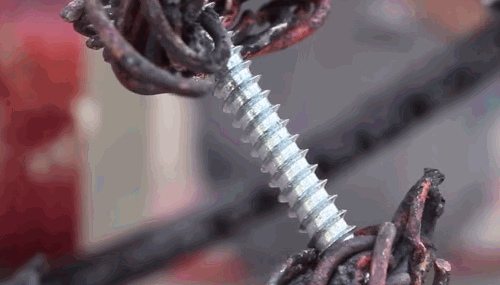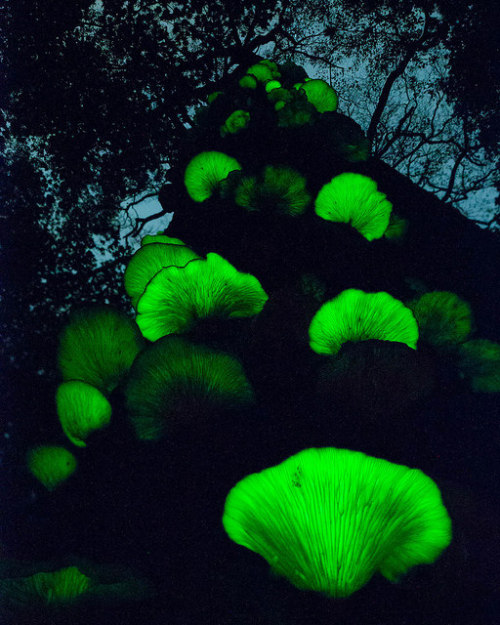You May Be Surprised About What You Are ACTUALLY Eating!
You may be surprised about what you are ACTUALLY eating!
More Posts from The-sleepy-chemist and Others

This week is Antibiotic Awareness Week – learn more about the different types of antibiotics with this graphic!

How Smells Trigger Memories By SciShow
SciShow explains how smells can bring back early memories – even memories that your brain didn’t know you had.
Hosted by: Hank Green
Mammals both produce milk and have hair. Ergo, a coconut is a mammal.



High Current/Amps through metal
Any metal that can conduct low voltage / high amperage electricity acts as a resistor between two electrode wires (as in the case above), which are made out of copper, which has a better conductivity than iron/steel which heats up due to the extreme electrical resistance.
Copper (Cu):
Resistivity: ρ(Ω·m) at 20ºC = 1.68×10−8
Conductivity: σ (S/m) at 20ºC = 5.96×107
Temp. Coefficient: 0.003862 (K−1)
Iron (Fe): (although what you see in the gif is steel, iron comes pretty close)
Resistivity: ρ(Ω m) at 20ºC = 1.00×10−7
Conductivity: σ (S/m) at 20ºC = 1.00×107
Temp. Coefficient: 0.005 (K−1)
Giffed by: rudescience From: This video


The Oldest Ancestor of Modern Birds Has Been Found in China
Ever since the birdlike dinosaur Archaeopteryx was first discovered in 1861, paleontologists have tried to decipher the evolutionary origins of modern birds—the only surviving descendants of the dinosaurs.
Now, paleontologists based out of the Chinese Academy of Sciences (CAS) have reached a new milestone in this quest. The CAS team has discovered the oldest fossils from the Ornithuromorpha group of dinosaurs, the common ancestor of all modern bird species.
The two specimens date back 130 million years to the Early Cretaceous period, when pterosaurs still dominated the skies. They belong to a new species named Archaeornithura meemannae, a feathered wading bird that lived in what is now northeastern China. The CAS team, led by paleontologist Min Wang, published a detailed analysis of the new specimens today in Nature Communications.
Continue Reading.

Giant Centipede - Scolopendra subspinipes
Scolopendra subspinipes (Scolopendromorpha - Scolopendridae) is a really huge and fast growing centipede that can exceed 20 cm in length. They are voracious, strictly carnivores, and also poisonous, feeding mostly on small insects, spiders, earthworms, and other arthropods.
Scolopendra subspinipes is cosmopolitan in tropical and subtropical regions of the world, where these animals serve an ecologically important role as soil and leaf litter predators.
The sting of this centipede reportedly causes intense pain, burning, swelling, and erythema.
References: [1] - [2] - [3]
Photo credit: ©Melvyn Yeo | Locality: not indicated (2013)

Moon Night Mushroom (Tsukiyotake) - Omphalotus japonicus
A spectacular photo of the bioluminescent fruiting bodies of the mushrooms scientifically named Omphalotus japonicus (Marasmiaceae), glowing in the darkness.
The glowing fungi grow on wood and their light is visible at night. Luminous higher fungi emit greenish light with a maximum emission in the range of 520–530 nm. A luminous taxon emits light in only a certain period of its life cycle; before and after that period, it generally does not glow.
Omphalotus japonicus is known from Japan and other sites in East Asia, where it is regarded as a poisonous mushroom.
Synonymous: Lampteromyces japonicus
References: [1] - [2]
Photo credit: ©Jun Kobayashi | Locality: Toyota-shi, Aichi Prefecture, Japan (2014)

Happiness Molecule
nem sirok csak 65ezren belementek a szemembe
A crowd of 65,000 sings ‘Bohemian Rhapsody’ perfectly while waiting for a Green Day concert
-
 mars-probe liked this · 6 years ago
mars-probe liked this · 6 years ago -
 gucci-depressione liked this · 6 years ago
gucci-depressione liked this · 6 years ago -
 mdelaunay liked this · 6 years ago
mdelaunay liked this · 6 years ago -
 dragonkinglover reblogged this · 6 years ago
dragonkinglover reblogged this · 6 years ago -
 dragonkinglover liked this · 6 years ago
dragonkinglover liked this · 6 years ago -
 edenhaem liked this · 6 years ago
edenhaem liked this · 6 years ago -
 bease1977 liked this · 6 years ago
bease1977 liked this · 6 years ago -
 extraterrestrial-channel-blog liked this · 6 years ago
extraterrestrial-channel-blog liked this · 6 years ago -
 lunarphenomena91 liked this · 8 years ago
lunarphenomena91 liked this · 8 years ago -
 ketelins liked this · 9 years ago
ketelins liked this · 9 years ago -
 micpaco liked this · 9 years ago
micpaco liked this · 9 years ago -
 star-the-witch liked this · 9 years ago
star-the-witch liked this · 9 years ago -
 justanotherfan1001 liked this · 9 years ago
justanotherfan1001 liked this · 9 years ago -
 if-i-couldiwouldfeelnothing reblogged this · 9 years ago
if-i-couldiwouldfeelnothing reblogged this · 9 years ago -
 hannahdayne liked this · 9 years ago
hannahdayne liked this · 9 years ago -
 susancobb4of5 liked this · 9 years ago
susancobb4of5 liked this · 9 years ago -
 summergreenthings liked this · 9 years ago
summergreenthings liked this · 9 years ago -
 chimerical-charisma reblogged this · 9 years ago
chimerical-charisma reblogged this · 9 years ago -
 smilethruthemisery liked this · 9 years ago
smilethruthemisery liked this · 9 years ago -
 omar-chacha reblogged this · 9 years ago
omar-chacha reblogged this · 9 years ago -
 mckenziealexandriath-blog reblogged this · 9 years ago
mckenziealexandriath-blog reblogged this · 9 years ago -
 fraviddy reblogged this · 9 years ago
fraviddy reblogged this · 9 years ago -
 tau-phi liked this · 9 years ago
tau-phi liked this · 9 years ago -
 kiyrah reblogged this · 9 years ago
kiyrah reblogged this · 9 years ago -
 disastrous-hooligan reblogged this · 9 years ago
disastrous-hooligan reblogged this · 9 years ago -
 abraxas-360 liked this · 9 years ago
abraxas-360 liked this · 9 years ago -
 polarbearjokesarecool liked this · 9 years ago
polarbearjokesarecool liked this · 9 years ago -
 kayy-leee liked this · 9 years ago
kayy-leee liked this · 9 years ago -
 freaky-lady-blog reblogged this · 9 years ago
freaky-lady-blog reblogged this · 9 years ago -
 krystaljelly reblogged this · 9 years ago
krystaljelly reblogged this · 9 years ago -
 losertopic liked this · 9 years ago
losertopic liked this · 9 years ago -
 fartpants22 liked this · 9 years ago
fartpants22 liked this · 9 years ago -
 ninefive-o reblogged this · 9 years ago
ninefive-o reblogged this · 9 years ago -
 lezbfrenz liked this · 9 years ago
lezbfrenz liked this · 9 years ago -
 ishoulddohomework reblogged this · 9 years ago
ishoulddohomework reblogged this · 9 years ago -
 w-longoria liked this · 9 years ago
w-longoria liked this · 9 years ago -
 speedytreekoala-blog liked this · 9 years ago
speedytreekoala-blog liked this · 9 years ago
60 posts